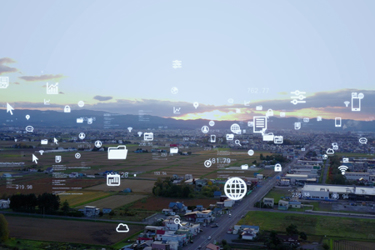Remote Visual Assistance: Revolutionizing Downtime Reduction And Enhanced Service Delivery
By Michael R. Blumberg, Blumberg Advisory Group, Inc.

In today's competitive business landscape, managing service delivery and mitigating downtime costs are critical for Original Equipment Manufacturers (OEMs) and their customers. Downtime can have a significant financial impact, with costs mounting every hour. Remote Visual Assistance (RVA) is an innovative solution designed to reduce downtime costs while revolutionizing service delivery across industries.
Types Of Downtime – Planned And Unplanned
Downtime is typically classified into two categories: planned and unplanned. Planned downtime involves scheduling activities like preventive maintenance, inspections, and line changes. In contrast, unplanned downtime results from unexpected incidents such as hardware failures and human errors. Addressing these unforeseen issues promptly and efficiently is crucial to prevent their recurrence.
Consequences Of Downtime – Financial And Operational Implications
Unplanned downtime can cause major disruptions in operations and affect customer relations. It can lead to substantial financial costs, lost revenue, and diminished business credibility. Using outcome-based service models can exacerbate the impact, as these models necessitate high levels of efficiency and availability from service providers.
Downtime Economics – Assessing The Costs
Downtime costs are dependent on an asset's value-in-use, which becomes apparent in its absence. The impact of downtime costs varies across industries, with activities often lasting more than an hour and recurring throughout the year for manufacturers. Astonishingly, the annual cost of unplanned downtime amounts to $50 billion.
Calculating Downtime Costs – A Comprehensive Approach
While lost revenue is a significant aspect of downtime costs, several other factors must be considered. These include detection, containment, recovery, ex-post response, equipment, IT productivity, user productivity loss, third-party expenses, and lost revenue.
Zero Unplanned Downtime – A Business Imperative
The concept of Zero Unplanned Downtime has emerged as a top priority for organizations. This approach involves conducting scheduled activities to anticipate and prevent malfunctions. Although investing in IoT-enabled tools and technology is crucial, human intervention remains essential, underscoring the need for innovative solutions.
RVA: The Catalyst For Zero Downtime
Remote Visual Assistance (RVA) software is a powerful solution for both reactive and proactive service situations. By enabling OEMs to support on-site field technicians, RVA helps bridge the knowledge gap between remote experts and new hires. This technology accelerates task completion and offers a faster, more effective solution to unplanned situations.
A Must-Implement Technology
RVA is invaluable when addressing unplanned downtime. Its location-based capabilities make it an optimal last-mile support tool for achieving Zero Unplanned Downtime. Companies at various stages of preventative maintenance implementation or those operating in a reactive mode can significantly benefit from RVA, making it an essential service strategy.
Use Cases of RVA in Supporting Planned and Unplanned Downtime:
- Preventive Maintenance: RVA can be used to guide technicians during planned maintenance activities. Remote experts can visually inspect equipment and advise on-site personnel on the necessary steps to perform maintenance, ensuring that the process is completed efficiently and correctly.
- Equipment Installation: During the installation of new equipment or machinery, technicians can leverage RVA to receive step-by-step instructions from remote experts. This reduces the chances of errors and minimizes the risk of unplanned downtime.
- Troubleshooting: In cases of equipment failure or malfunction, RVA can be used to quickly diagnose and resolve the issue. Remote experts can guide on-site technicians through the troubleshooting process, reducing downtime and getting the equipment back up and running more rapidly.
- Training: RVA can be utilized to enhance the training of new technicians, as they can receive real-time guidance from experienced experts while performing tasks. This improves the learning curve and ensures that they can handle complex situations with confidence, ultimately minimizing downtime.
- Emergency Response: In the event of an emergency or natural disaster, RVA can facilitate the rapid deployment of remote assistance to affected areas. This allows technicians to receive crucial guidance from experts, expediting recovery efforts and minimizing the impact on operations.
Conclusion
Remote Visual Assistance is a groundbreaking solution that enables OEMs and their customers to mitigate downtime challenges while enhancing service delivery. By providing real-time support for field technicians, RVA improves service efficiency, reduces downtime costs, and ensures customer satisfaction.
Moreover, adopting RVA positions companies to stay competitive, optimize their bottom line, and foster a culture of innovation. As more organizations integrate RVA into their service strategies, we can anticipate a significant reduction in unplanned downtime across industries.
For businesses seeking to enhance service delivery and minimize downtime, Remote Visual Assistance is an innovative solution worth considering. Don't miss the opportunity to harness the power of RVA and transform your business. By implementing this cutting-edge technology, you can not only optimize your operations but also create a more resilient and adaptive organization that is well-equipped to tackle future challenges and seize new opportunities.
About The Author
Michael Blumberg is President of Blumberg Advisory Group, the leading research and consulting firm in the Field Service Industry. Mr. Blumberg is a growth catalyst helping technology service and software solutions providers establish market preeminence through a laser focus on thought leadership, operational excellence, and customer experience. He is a prolific author and frequent speaker at industry events and conferences. He is available via email at michaelblumberg@blumbergadvisor.com. Michael’s blog is accessible at https://www.blumbergadvisor.com/blog. Follow him on Twitter via @blumberg1.
